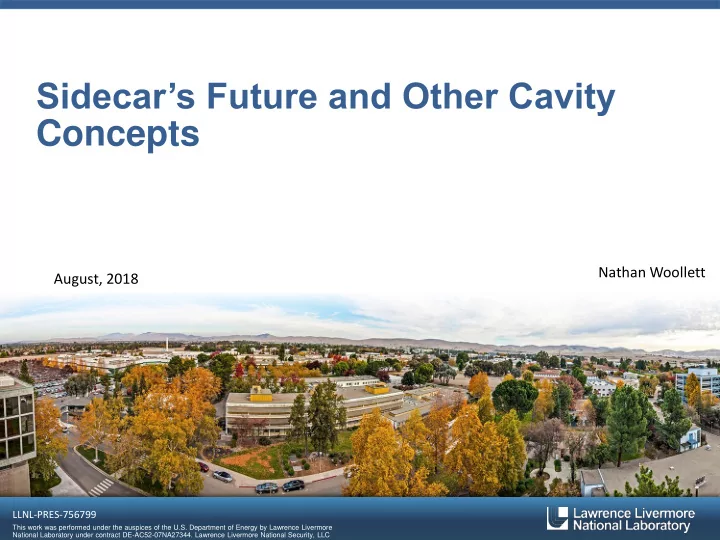

Sidecar’s Future and Other Cavity Concepts Nathan Woollett August, 2018 LLNL-PRES-756799 This work was performed under the auspices of the U.S. Department of Energy by Lawrence Livermore National Laboratory under contract DE-AC52-07NA27344. Lawrence Livermore National Security, LLC
The Sidecar Space • At the moment the sidecar cavity poorly utilizes the available pace. • The piezo actuators were connected to the millikelvin stage. 2 LLNL-PRES-756799
New Cavity Dimensions 1” 4.25” Sidecar original: diameter – 2.5” Height – 4.75” Sidecar 2: Diameter – 3.625” Height – 5.5” 3 LLNL-PRES-756799
New Cavity Dimensions To achieve a wide tuning range a 2” ‘fat rod’ design is being used. 4 LLNL-PRES-756799
Parametric Amplification • Low noise first stage amplification decreases overall noise temperature significantly. • TWPAs can provide broad band, low noise parametric amplification. • Enables the experiment to search multiple GHz in a single run. 5 LLNL-PRES-756799
Expected Exclusion • Sidecar will run in parallel with the main experiment throughout 2019 • KSVZ is still out of reach to a maximum frequency range approach will be deployed. (Order of magnitude estimate drawn by hand) 6 LLNL-PRES-756799
The Slotcar ▪ Fatrod designs introduce a high number of mode crossings. Can we avoid them? ▪ The slotcar is designed to ruin the Q of TE modes and minimize the size of crossings. 7 LLNL-PRES-756799
The Slotcar 8 LLNL-PRES-756799
Summary • Sidecar will provide useful R&D to guide the main ADMX experiment. • Real science results are being produced with an ambitious 2018/2019 run plan • Keep an eye out for our upcoming paper. 9 LLNL-PRES-756799
Collaborating Institutions: UW, UFL, PNNL FNAL, UCB, LLNL LANL, NRAO, WU, Sheffield The ADMX collaboration gratefully acknowledges support from the US Dept. of Energy, High Energy Physics DE-SC0011665 & DE-SC0010280 & DE-AC52-07NA27344 Also support from PNNL and LLNL LDRD programs and R&D support from the Heising-Simons institute. ADMX G2 at U. Washington, Scientific American, 2015
Recommend
More recommend